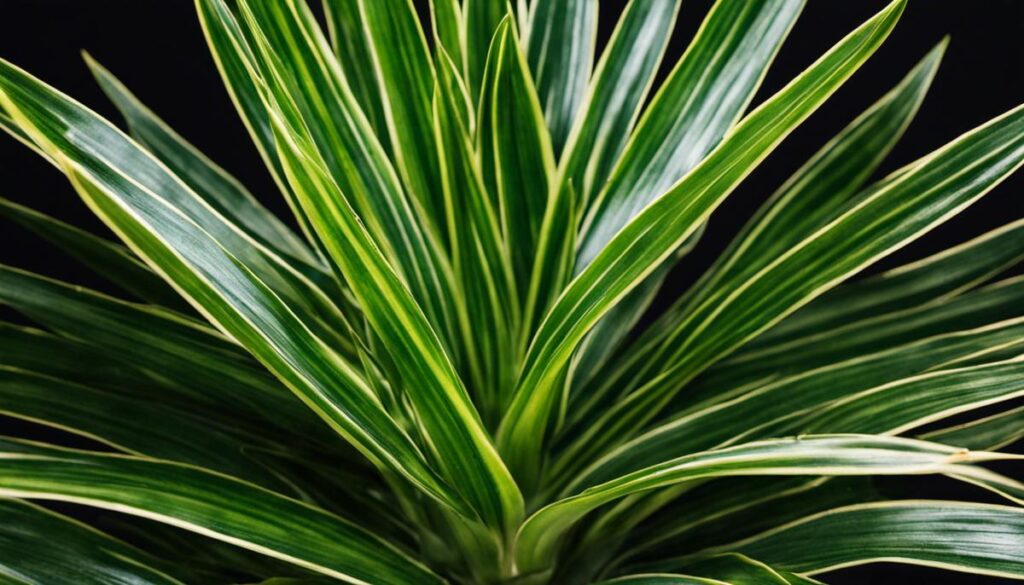Captivating with its beauty and interesting growth pattern, Dracaena is a plant that garners attention and inspires awe. With over 120 different species, each with its unique characteristics, understanding these exotic plants can initially seem like a daunting task. However, with the right knowledge and guidance, anyone can master the art of Dracaena care.
From understanding the species-specific requirements to knowing their light and temperature needs, there’s a lot we can learn about these exceptional plants. This information equips us to water and fertilize them properly, ensuring their growth and vitality. Moreover, we can identify the common pests and diseases that affect Dracaenas early. Armed with knowledge about preventive measures and intervention strategies, we can effectively protect the health of our Dracaenas.
Understanding Dracaena
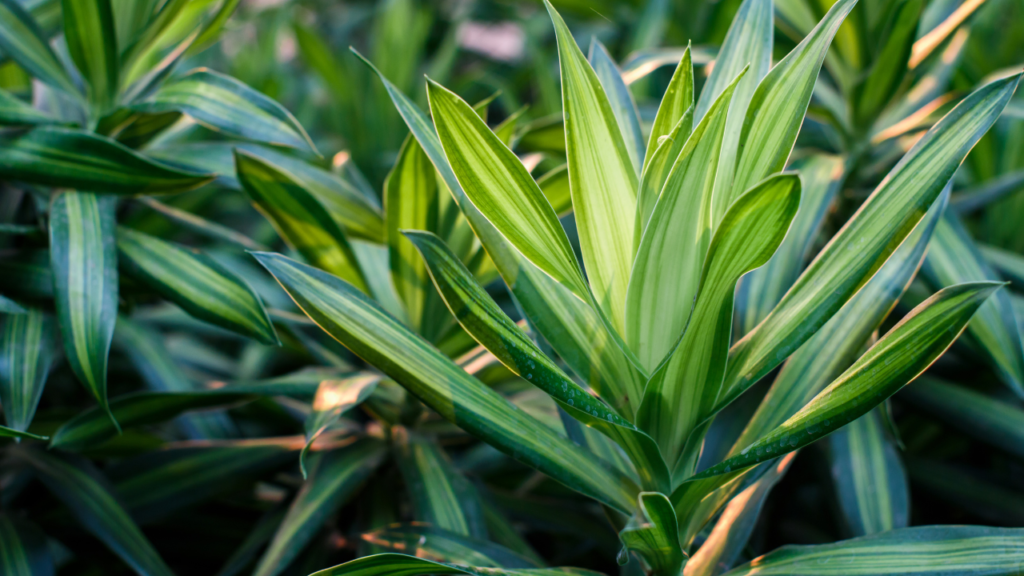
Understanding Dracaena: A Versatile and Easy-to-Care-for Houseplant
Dracaena, also known as dragon tree, is a group of roughly 120 different species of plants, native to Africa, southern Asia, and Central America. Dracaena species are generally characterized by their sturdy, woody trunks and strap-like leaves, typically green but often variegated or lined with red or yellow. The foliage patterns and colors vary significantly across different species, making each Dracaena plant quite unique.
Growth Pattern and Unique Characteristics
Dracaena plants usually grow upright, with the leaves sprouting from the top of the plant. The leaves can reach up to three feet long, depending on the species and conditions. The plants themselves can reach heights of several feet indoors, although this takes many years. Some species produce inconspicuous flowers when mature, though this is rare in indoor growing conditions.
Many species of Dracaena are known for their air-purifying qualities. They are particularly good at removing certain toxins from the air, including formaldehyde, benzene, toluene and xylene. This makes them not only beautiful decorative plants but also beneficial for air quality.
Understanding Different Species of Dracaena
While all Dracaena plants share certain characteristics, they also have unique needs and attributes depending on the species. The most common types you’ll find are Dracaena marginata, Dracaena fragrans, and Dracaena reflexa.
Dracaena marginata, or the dragon tree, is perhaps the most striking with its thin, arching leaves that are a deep green to reddish color. This species is quite hardy and can withstand less-than-ideal conditions, making it a great choice for beginners.
Dracaena fragrans, or the corn plant, is an indoor favorite worldwide. It boasts broad, glossy leaves that can be either solid green or variegated with yellow or white, depending on the variety. It’s appreciated for its tolerance to low light conditions.
Dracaena reflexa, or song of India, features leaves with a light green center and darker green edges. This plant prefers bright, indirect light and does especially well in a humid environment, making it slightly more challenging for beginners.
Creating an Optimal Care Routine
In general, all Dracaena plants prefer bright, indirect sunlight and well-draining soil. Direct sunlight can cause the leaves to become scorched. Although these plants are relatively drought tolerant, they don’t like to be too dry. Water the plant thoroughly and then allow it to dry out slightly before watering again.
Dracaena plants are sensitive to fluoridated water, so using rainwater or distilled water can prevent brown leaf tips. They also prefer humid environments, so regular misting can be very beneficial. This also helps keep their leaves free of dust.
Fertilize regularly during growth periods, typically spring and summer, with an all-purpose plant food. Be careful not to overfeed, as this can lead to salt buildup in the soil, which can damage the plant.
Identifying Potential Issues Early
Common problems that can affect Dracaena plants include root rot, caused by overwatering, and leaf-spot disease, usually brought on by poor ventilation or overly wet leaves. Brown or yellow leaves can indicate too much direct sunlight, inadequate watering, or exposure to drafts.
Insects such as spider mites and scale can also pose a threat. Treat these pests by wiping the leaves with a soapy water mixture or with an insecticidal soap.
Understanding your Dracaena’s specific needs and monitoring its health will ensure it thrives for a long time to come. Note that all parts of the Dracaena plant are toxic to pets, so keep them out of reach from curious pets.
House Plant Essentials
Dracaena Light and Temperature Requirements
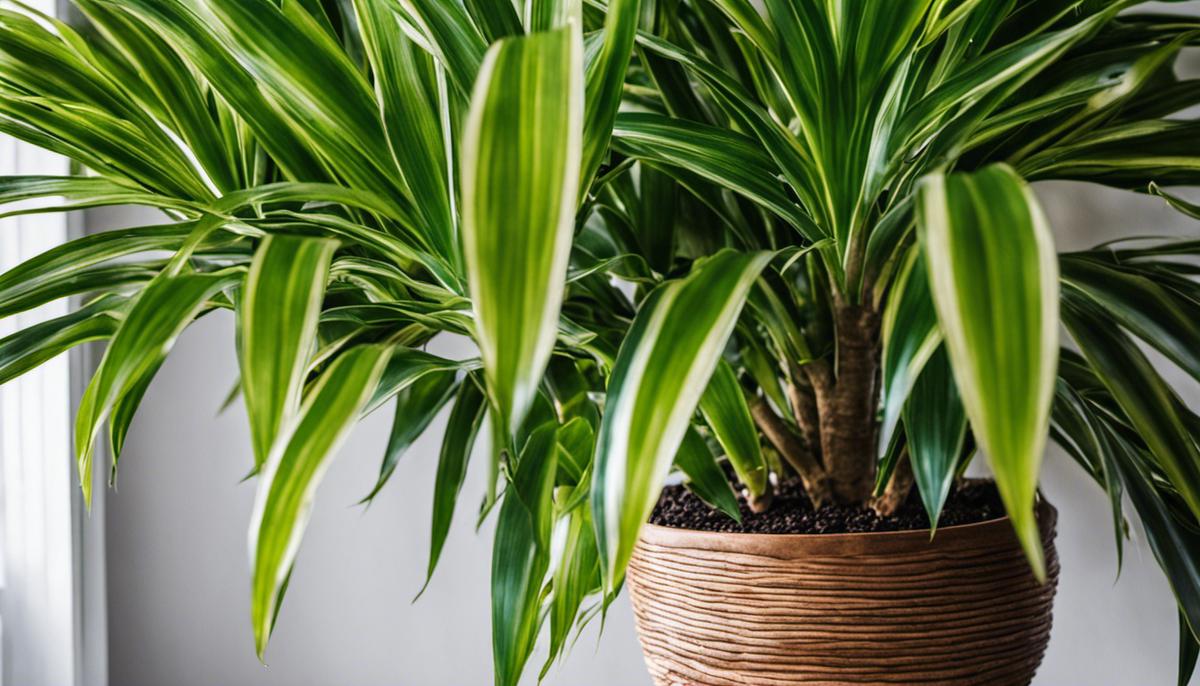
Understanding Dracaena Light Requirements
Dracaena plants, also known as dragon trees, have specific light requirements to thrive. Generally, they enjoy bright, indirect light. While they can survive in low light conditions, insufficient light can slow their growth and cause the leaves to become pale and lose their vibrant color.
To accommodate the light needs of your Dracaena, place the plant near a window where it can receive plenty of natural light, but not directly under the sun. Direct sunlight can cause leaf burn. If you live in a space with limited natural light, fluorescent lights can be a good substitute. Aim for a balance – too much light can harm dracaenas as much as insufficient light.
Considering Temperature Requirements for Dracaena
Dracaena plants are tropical by nature, meaning they prefer warmer temperatures. The ideal temperature range for most types of dracaena is between 65-75 degrees Fahrenheit during the day, and slightly cooler, about 50-60 degrees Fahrenheit at night.
In winter months, make sure the temperature does not go below 50 degrees Fahrenheit as the plant could suffer from chilling injury. Avoid placing your Dracaena near vents, radiators, or drafts from doors or windows as these can cause temperature extremes and potentially damage the plant.
How to Maintain Optimal Environmental Conditions for Dracaena
Maintaining the right balance of light and temperature for your Dracaena means monitoring and adjusting as necessary. Make sure your plant is not sitting in a place that could become unexpectedly hot or cold. Shifts in temperature and light can stress the plant and impact its growth.
During hotter seasons, be particularly mindful as Dracaenas don’t fare well in high heat. Similarly, during shorter winter days, consider increasing the artificial light source if needed.
It’s also worth noting that Dracaenas prefer high humidity levels – a trait common to many tropical plants. To increase humidity, consider misting the plant every few days with distilled water or placing it on a tray filled with pebbles and a small amount of water.
By controlling the light and temperature levels of your Dracaenas’ environment, you can ensure they stay healthy and vibrant.
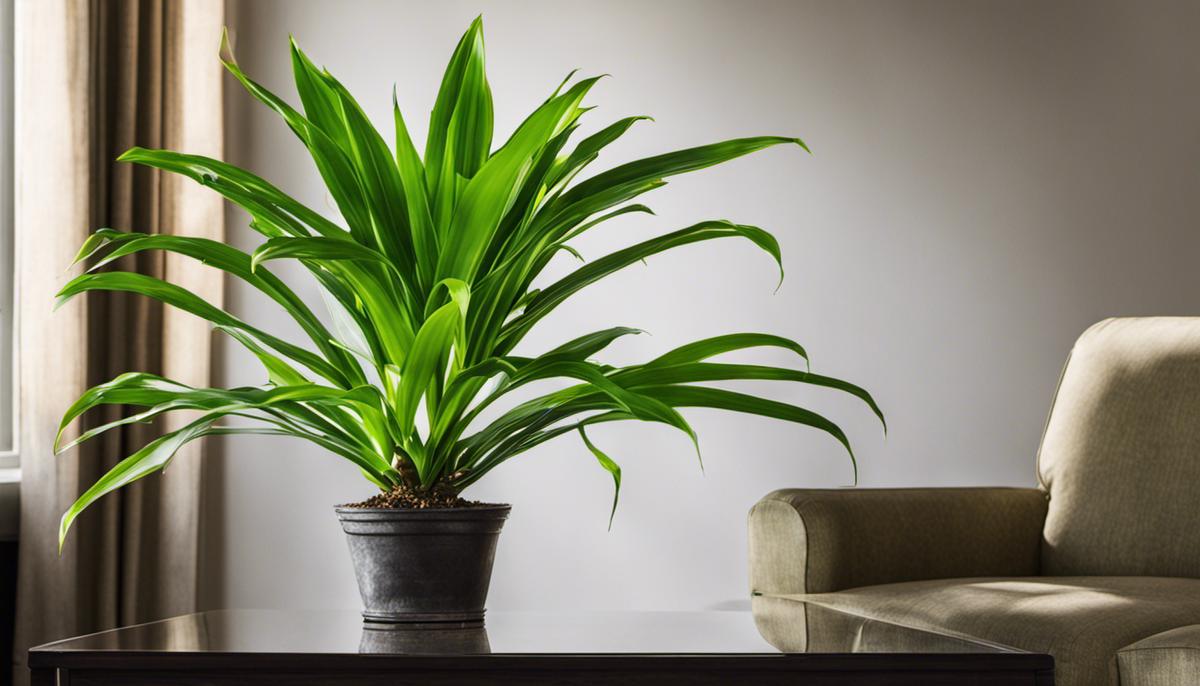
Watering and Fertilizing Dracaena
Understanding Watering Needs for Dracaena
Dracaena plants are more tolerant of underwatering than overwatering. Overwatering is one of the most common causes of Dracaena plant deaths. The plant prefers soil that is slightly dry, but not too dry. Wait until the top inch of soil is dry before you water the plant again.
To water your Dracaena, pour water evenly across the soil until it drips out the bottom drain holes. This moisture should be enough to keep the plant hydrated without making the soil waterlogged.
Signs of Overwatering and Underwatering
Recognizing the signs of overwatering and underwatering can help you identify what your Dracaena plant needs. Symptoms of overwatering include yellowing leaves, a musty smell, moldy patches on the soil or plant, and a general wilted or lanky appearance. Overwatered Dracaena might also show root rot, so if the plant is severely wilted, consider checking the roots.
Signs of underwatering are similar to overwatering. With underwatering, the leaves may become yellow and wilt, the plant may stop growing, and the soil will be dry to the touch. In extreme cases of under watering, the leaves may also blister and start to fall off.
Best Fertilizers for Dracaena
When it comes to fertilizing your Dracaena, a balanced houseplant fertilizer works best. Dracaena plants are light feeders, so you don’t need to fertilize often. You’ll also want to dilute the fertilizer to avoid burning the plant’s roots with too much salt, a common issue with over-fertilization.
Fertilizers rich in nitrogen can promote lush and vibrant foliage in Dracaena plants. However, avoid fertilizers with a high concentration of fluoride as Dracaena is sensitive to it and may respond with brown leaf tips or margins.
Fertilizer Application Schedule
The rule of thumb is to fertilize the plant every two weeks in the growing season (spring and summer) and every six weeks in the dormant season (fall and winter). This balance helps provide the nutrients the plant needs to grow strong and healthy, without overwhelming it. Always remember to water your plant first before applying fertilizer. This pre-watering step helps to protect the plant’s roots from potential fertilizer burn.
Pest and Disease Management in Dracaena
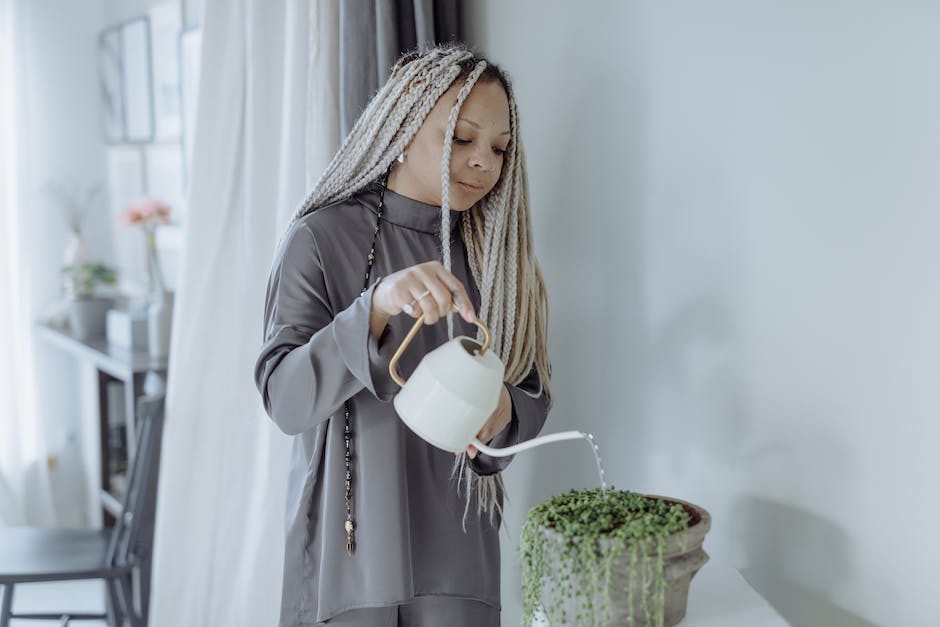
Identifying pests in Dracaena
The most common pests that affect Dracaena plants are spider mites, scale, mealybugs, and thrips. Identifying these pests early on is a crucial step in proper Dracaena care. Spider mites are barely visible to the naked eye and leave a distinct spiderweb-like covering on leaf undersides. Scale insects look like tiny, immovable bumps on the leaves or stems. Mealybugs appear as white, cottony masses in leaf axils, on the lower sides of leaves, or around leaf veins. Thrips are tiny, dark-colored insects that can cause white patches and silvery damage to leaves.
Pest Management for Dracaena
Once you’ve identified an infestation, remove the pests manually using a cloth or a soft brush. Scale insects can be removed using a toothpick or a cotton swab dipped in alcohol. The persistent pests like mealybugs and spider mites require a stronger solution. Wipe down leaves with soapy water and rinse thoroughly. If the infestation persists, consider using a horticultural oil or pesticide spray. Ensure you follow the labeled instructions. It’s recommended applying these treatments in the evening or on a cloudy day to prevent leaf burn.
Recognizing diseases in Dracaena
Dracaena plants are relatively resistant to diseases, but they can nonetheless fall prey to a few. Fungal leaf spot is common, manifesting as yellow or brown spots on the leaves. Root rot, a result of overwatering, can also affect Dracaenas, resulting in wilting or yellowing leaves, or a stem that feels mushy to touch.
Disease Management for Dracaena
Treatment of fungal leaf spot begins with removing the infected leaves and improving airflow around the plant to prevent a moist environment that fosters fungi. For root rot, you may need to trim the affected roots and repot the plant in fresh, well-draining soil. In both cases, make sure your tools are adequately sterilized to prevent the spread of the disease.
Preventive Measures
Prevention is the best course of action when it comes to Dracaena care. For pest management, regularly examining your plants allows early detection and removal of pests. Pruning overgrown foliage can also help keep pests away by improving sunlight and airflow.
Keeping the room humidity between 40-50%, avoiding waterlogged soil, and using a well-draining potting mix can prevent the major diseases in Dracaena. It’s also a good practice to isolate new plants before introducing them to your plant collection to prevent the spread of pests or diseases. Regular feeding with a balanced liquid fertilizer also supports the plant’s overall health and resistance to pests and diseases.
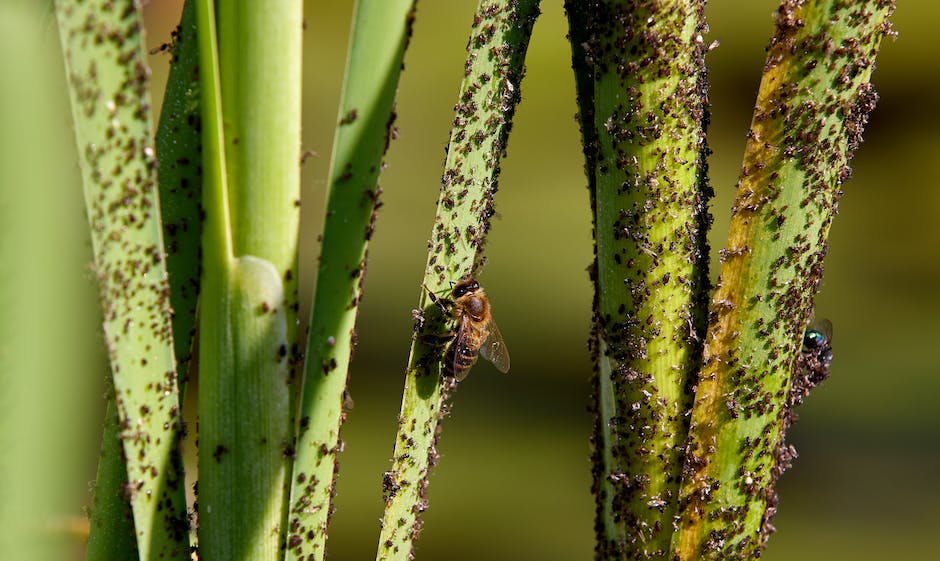
In essence, Dracaena plants are captivating specimens that have the potential to add vibrancy and life to any space. However, they require a certain level of understanding and care. This includes meeting their lighting and temperature needs, providing the right amount of water and appropriate fertilizer, as well as managing pests and diseases effectively. By adhering to these considerations, we can ensure the well-being of our Dracaena plants and continue to enjoy their beauty for years to come. Hence, caring for Dracaena plants isn’t just about the plants’ needs, but truly, it’s a holistic process wherein we learn to appreciate the beauty in nature, derive satisfaction from nurturing life, and truly experience the joy of indoor gardening.
